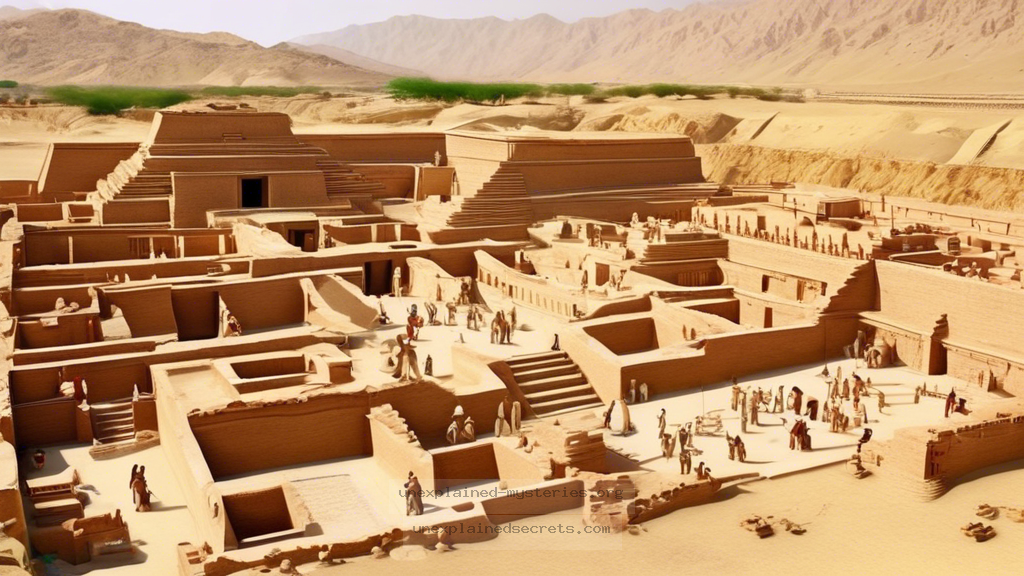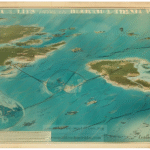What Happened to the Advanced Civilization of the Indus Valley?
What Happened to the Advanced Civilization of the Indus Valley?
The mystery of the Indus Valley Civilization (IVC) has captivated historians and archaeologists for decades. Flourishing around 2500 BCE in what is now Pakistan and northwest India, the IVC was one of the world’s earliest urban cultures, yet it disappeared around 1900 BCE, leaving behind a wealth of artifacts but few explanations for its decline. This question matters because understanding the fate of the IVC could provide crucial insights into the resilience of ancient societies and the factors contributing to their growth and collapse. In this post, we will explore the historical context, core theories surrounding its decline, and ongoing research that continues to unravel this enigmatic civilization.
Historical Context of the Indus Valley Civilization
The Indus Valley Civilization was one of the three great ancient civilizations, alongside Mesopotamia and Ancient Egypt. Spanning over 1.25 million square kilometers, it boasted some of the largest cities of the ancient world, including Harappa and Mohenjo-Daro. Its civilization was marked by advanced urban planning, sophisticated drainage systems, and standardized weights and measures, suggesting a high degree of social organization and economic activity.
Archaeological evidence indicates that the civilization thrived due to its strategic location near the fertile floodplains of the Indus River, which supported agriculture and trade. The people of the IVC engaged in various crafts, including bead-making, metallurgy, and pottery, indicating a rich cultural life. Despite its achievements, the IVC mysteriously declined around 1900 BCE, leading historians to ask: what factors contributed to this remarkable downfall?
Core Theories Regarding the Decline of the Indus Valley Civilization
Several theories have been proposed to explain the decline of the Indus Valley Civilization, ranging from environmental changes to sociopolitical factors. The following are the most significant hypotheses:
- Climate Change: Some researchers argue that significant climatic shifts, including droughts and monsoon variability, could have led to agricultural failures and resource scarcity.
- Flooding: Evidence of flooding in the region suggests that catastrophic natural disasters may have devastated cities and disrupted trade.
- Sociopolitical Factors: Internal strife, invasions, or social unrest could have led to the collapse of the complex societal structures that the IVC had established.
- Trade Disruption: The decline of trade networks with neighboring regions may have weakened the economy and contributed to the civilization’s downfall.
Practical Evidence Supporting the Theories
Archaeological excavations have provided valuable insights into the IVC, revealing a complex society with remarkable achievements. However, they have also raised questions about its decline. For instance, evidence of declining urban infrastructure and abandoned sites suggests a gradual process of decline rather than a sudden collapse.
Some studies have indicated a shift in the sedimentary layers of the Indus River, pointing to increased aridity in the region around the time of the civilization’s decline. Additionally, paleoclimatic data suggests that the monsoon patterns that sustained agriculture were becoming more erratic, potentially leading to food shortages. Furthermore, evidence of violence or warfare, such as fortifications in later settlements, hints at possible sociopolitical instability.
Comparative Analysis with Other Ancient Civilizations
To better understand the factors contributing to the decline of the Indus Valley Civilization, it can be helpful to compare it with other ancient cultures such as the Maya and the Roman Empire.
| Civilization | Decline Factors | Similarities to IVC |
|---|---|---|
| Maya | Climate change, warfare, societal collapse | Environmental stress and resource depletion |
| Roman Empire | Political instability, economic decline, invasions | Internal strife and trade disruptions |
Both the Maya and the Roman Empire faced multifaceted challenges that led to their declines, similar to the IVC. This comparative analysis suggests that complex societies might be vulnerable to a combination of environmental, economic, and political factors that can precipitate their downfall.
Alternative Perspectives on the Decline
While many theories focus on environmental or sociopolitical factors, some scholars argue for a more nuanced understanding of the decline. For instance, some suggest that the IVC did not entirely collapse but rather transformed as its population migrated to more sustainable areas, adapting to changing conditions rather than facing a single catastrophic event.
Additionally, the notion of “collapse” has been challenged, with some researchers positing that the end of the IVC marked the beginning of new cultural developments in the region rather than a complete disappearance. This perspective emphasizes the adaptability of human societies in the face of challenges.
Common Misconceptions About the Indus Valley Civilization
Many myths and misconceptions surround the IVC, contributing to the mysteries of its decline. One prevalent misconception is the belief that the civilization was entirely homogeneous and lacked diversity. In reality, archaeological findings indicate a rich tapestry of cultures and languages within the IVC.
Another misconception is that the IVC was a stagnant society that did not evolve over time. In truth, the civilization experienced significant changes in urban planning, trade, and cultural practices, reflecting an adaptive and dynamic society.
Best Practices for Investigating Lost Civilizations
Studying lost civilizations like the IVC requires a multidisciplinary approach, combining archaeology, anthropology, climatology, and history. Here are some best practices for researchers:
- Interdisciplinary Collaboration: Collaborative efforts among experts from various fields can lead to more comprehensive insights.
- Advanced Technology: Utilizing cutting-edge technologies such as satellite imagery and ground-penetrating radar can enhance archaeological investigations.
- Field Studies: Conducting thorough field studies and excavations is crucial for uncovering artifacts and contextual evidence.
Future Developments and Ongoing Research
Research into the Indus Valley Civilization is ongoing, with new discoveries continually reshaping our understanding of this ancient culture. Recent excavations and advancements in technology have led to significant findings, including new sites that expand the known boundaries of the civilization.
Additionally, studies on ancient DNA and isotopic analyses are providing insights into the diet and health of the IVC population, which could help elucidate the reasons behind their decline. As researchers continue to explore the IVC, we can expect to gain a deeper understanding of how ancient societies adapt, survive, or perish in the face of challenges.
Conclusion: Understanding the Legacy of the Indus Valley Civilization
The decline of the Indus Valley Civilization remains one of the most intriguing mysteries in the study of ancient cultures. By exploring the various theories, evidence, and alternative perspectives, we can appreciate the complexity of this civilization and the factors that contributed to its decline. Ultimately, the legacy of the IVC serves as a reminder of the resilience and adaptability of human societies, as well as the importance of understanding our history to inform our future.
Other Articles
Recent Posts
- What Happened to Flight MH370? The Conspiracy Theories That Still Haunt Us
- What Secrets Lurk Within the Walls of the Infamous Trans-Allegheny Lunatic Asylum?
- What Evidence Supports the Existence of Bigfoot in the Pacific Northwest?
- What Happened to the Indus Valley Civilization? Unraveling the Mysteries of Ancient Urban Life
- Can Telepathy Be Scientifically Proven Through Laboratory Evidence?







